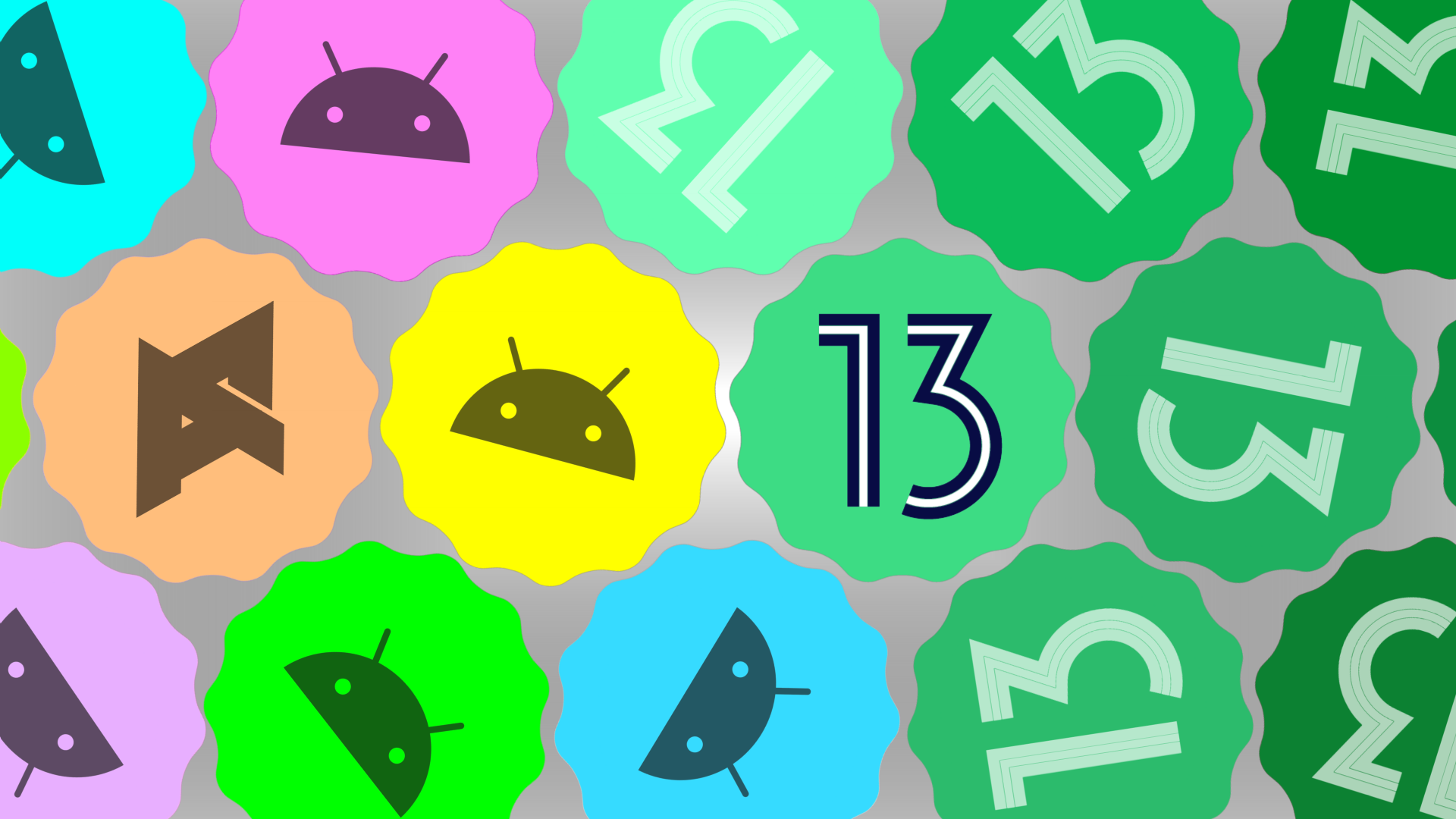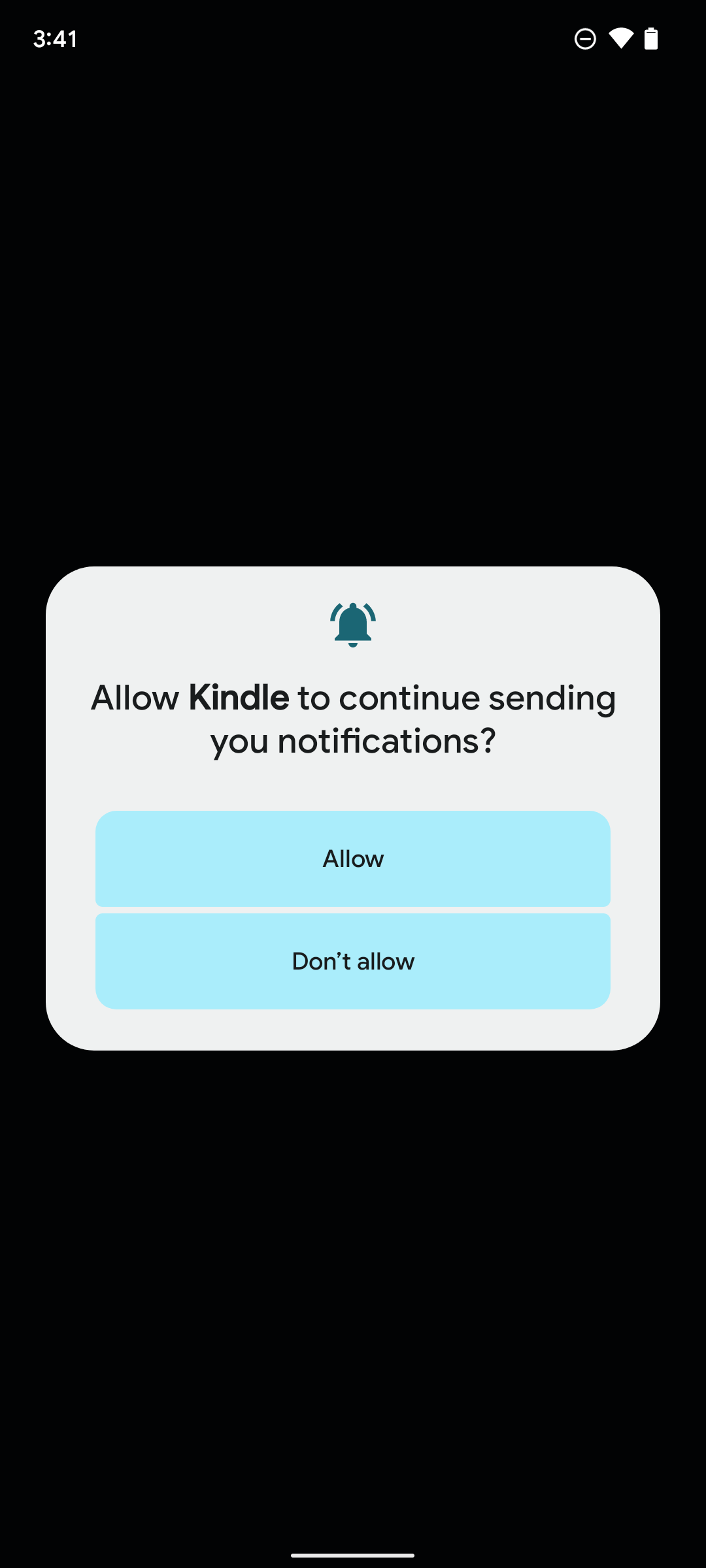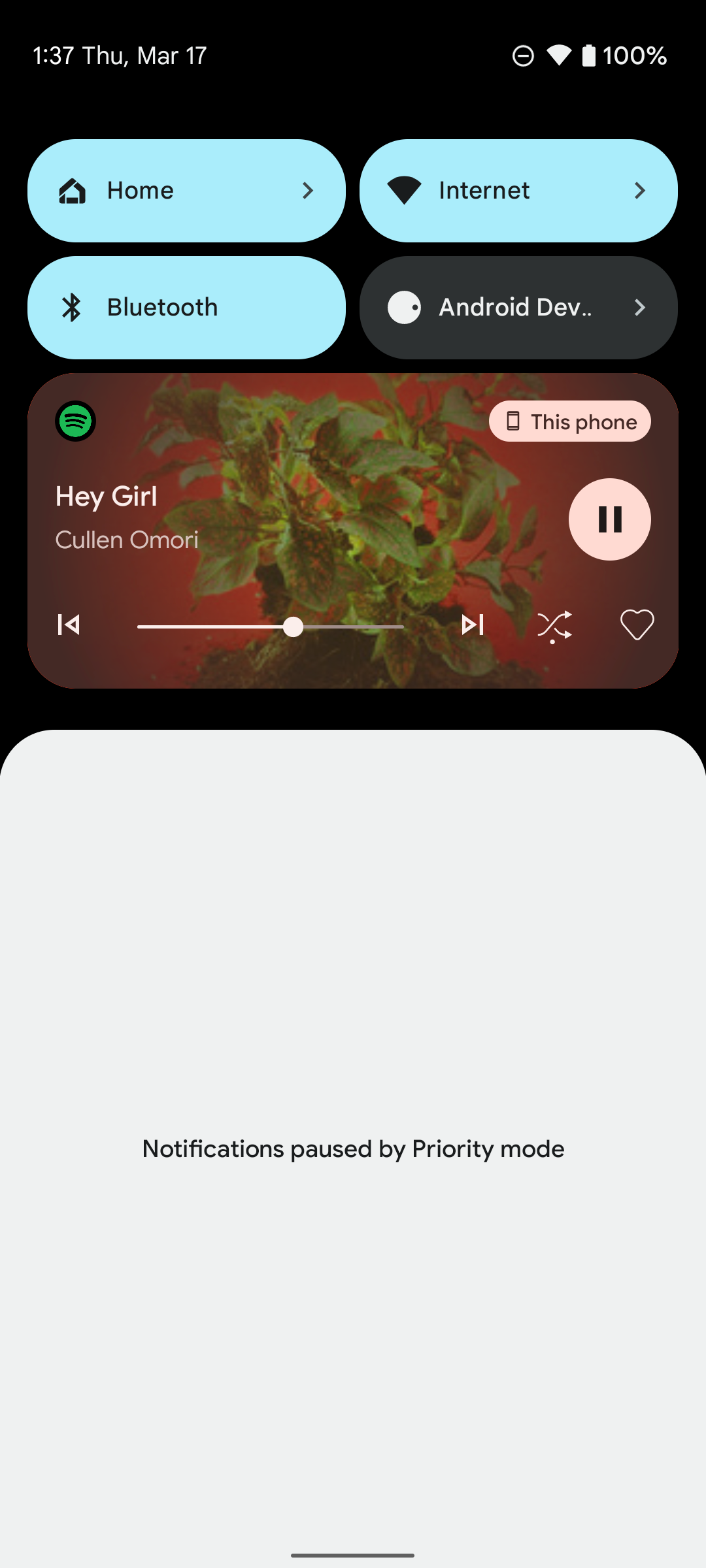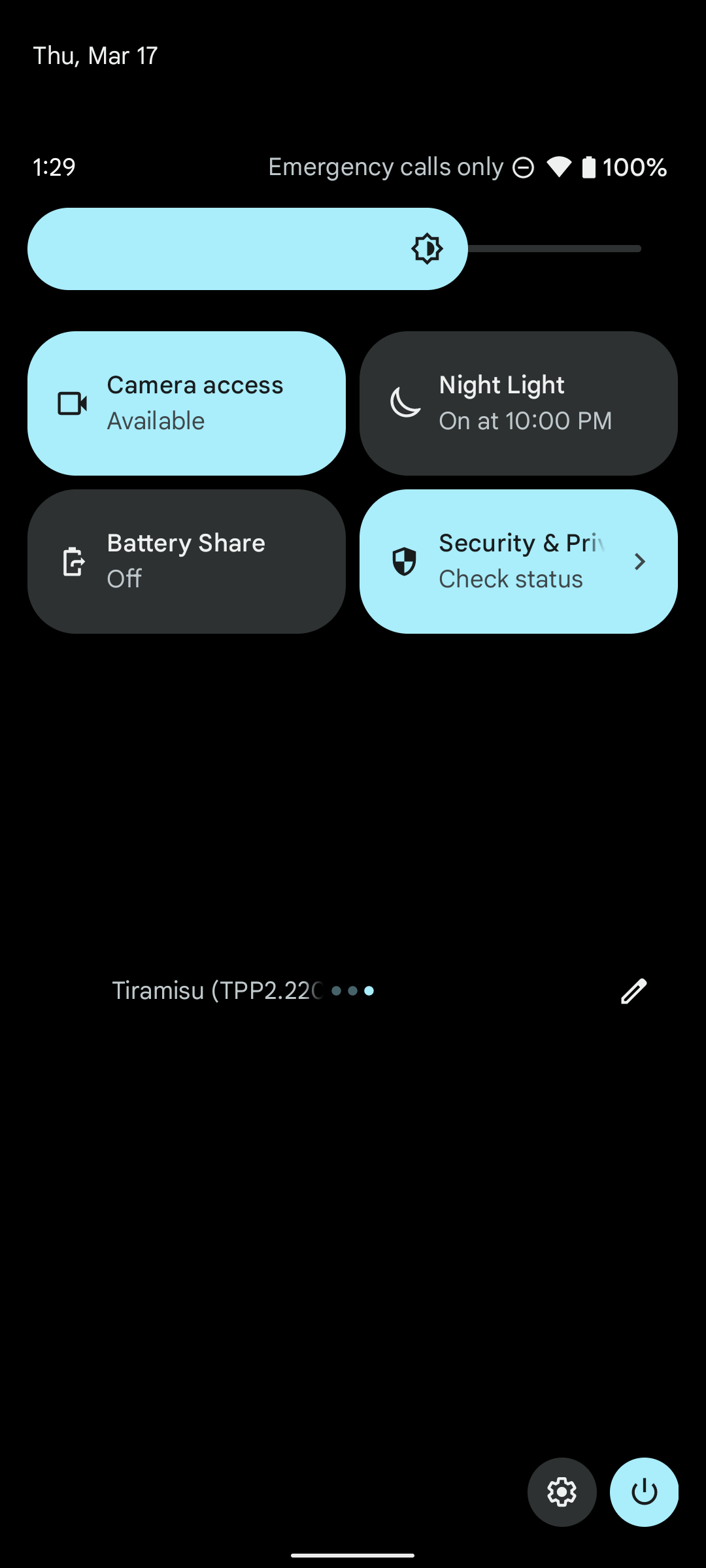The second and presumably last Android 13 Developer Preview release is now rolling out, following the promised monthly cadence for these early releases. Google has highlighted a handful of changes in this release, like the new notification permission, better text wrapping and line heights for some languages, and Bluetooth LE Audio support. We've spotted plenty of changes on our own, including a new media player, fresh branding for Do Not Disturb, and a ton of color choices for Material You. Phones already on Android 13 DP1 should be getting an OTA update to the new release soon, and images are now available for manual installation for the Pixel 4 and later.
The new notification permission screen.
We've known about the new notification permissions in Android 13 since last year (we even saw them in action exclusively earlier this year), but it sounds like they're live as of DP2, and developers can start to update and test their apps against it. A new API also offers downgradable permissions for apps that want to better respect customer privacy when they no longer need access to something.
Japanese text will wrap better in Android 13 DP2, and non-Latin scripts (as in: languages that don't use the letters similar to those you're reading here) will be clipped less often and positioned better. If you're used to using phonetic inputs for your language (like Japanese or Chinese), Android 13 DP2 also has a new text conversion API to make input faster.
Left: Improved text wrapping in Japanese. Right: reduced clipping in non-Latin scripts.
One of the biggest user-facing changes in DP2 is the redesigned media player and output picker. It's a much improved design over what we saw in Android 12, with more controls and a gorgeous artwork-based design.
Google tweaked the power and settings shortcuts in the notification drawer, making it easier than before to find and tap on each respective icon.
There's also support for color vector fonts, with system emoji now updated to use the newly supported format for fast and sharp rendering, and Bluetooth LE Audio support for improved battery life when playing audio on supported devices.
Developers are encouraged to start compatibility testing for API changes and deprecated features now. App compatibility changes can still be tested individually courtesy of that titled section in Developer Options.
As usual, if you didn't already jump on Android 13 DP1, you'll have to install DP2 manually to check it out. Until Google switches things over to beta in April, it's intentionally not a simple process — though who knows what will happen with the Android Beta Program then, now that Google is also simultaneously testing Quarterly Platform Releases with it.
We have an easy guide for how to install the Android 13 Developer Previews if you need it. However, we strongly recommend against installing any of the Developer Previews on a "daily driver" phone since these early builds can have issues. Don't install it if you aren't comfortable troubleshooting issues independently if and when things go wrong.
We're still digging through everything new inside Android 13 DP2, so keep an eye on our upcoming coverage for more information.
You can download the new developer preview release at Google's site, with images available for the Pixel 4 series, Pixel 4a series, Pixel 5, Pixel 5a, and Pixel 6 series.
Here's everything new in Android 13 DP2
- Android's Do Not Disturb mode has been renamed to "Priority mode," a change that certainly won't cause any confusion in the future. Aside from the new name, it's still the same old settings.
- Quick Settings has a new privacy shortcut, though for now, all it does is link to a new menu with indicators for camera, microphone, and location. It's definitely unfinished, so we'll have to wait for a future beta to find out more.
- Android 13's new media player and output picker are finally here, and they're as gorgeous as we'd expected. It does seem a little buggy, but the new UI makes it easier to control your music and pair new Bluetooth speakers.
- The power and settings shortcuts got a new placement in Android 13 DP2. They should both be a whole lot easier to find, while also making them easier to reach on larger phones.
-
Android got its
groovetouch indicators back! With Android 13 DP2, you can once again enable touch while recording your screen, a handy tool that disappeared with the 12L update. - Material You is getting a ton of new color choices, thanks to three new modes for dynamic themes. Although they're locked behind some shell commands at the moment, it should help those who felt Google's Android 12 hues were too boring.
- Per-app language settings are now live in Android 13, but they don't work with every app just yet. While some third-party services like Amazon play nice, many first-party Google apps don't allow you to change the language individually yet. Likewise, apps like Twitter haven't adopted the feature either.
- A new "kids mode" taskbar is hidden in Android 13 DP2, and if manually activated, it looks much different than the current gesture system. The home and back buttons make for a return, though you won't find recent apps in this UI.
- Android 13 DP2 has a handful of new vibration settings, including a mysterious media haptics slider that doesn't seem to do anything just yet. Could it be tied to gaming, or something else entirely?
- Google has pushed its display and font size options together under one menu, so you can adjust your device's sizing settings to your heart's content without jumping between pages.
- Lock screen notification overflow has gone on a diet, with a bar that adaptively resizes to the number of notification icons in it, rather than spanning the entire screen width.
- We've known some changes to how Android utilizes screen savers were coming, and with Android 13 DP2, we're getting our first real glimpse. This update has an all-new look for browsing screen savers, a significant redesign as opposed to the older — and very plain — menus.
- An app drawer icon is returning to Android's taskbar — though only on big-screen devices like tablets. Your device needs a DPI level higher than 600 for it to appear.
- A fancy split-screen feature from Android 12L is coming to Android 13, though it's still pretty buggy at the moment. If it sticks around for a stable release, you'll be able to bring up multiple windows on your phone right from the notification tray.
- Android 13 will alert you whenever an app is excessively draining your battery in the background, with warnings every 24 hours.
- Smart home controls will finally be usable without unlocking your phone, something we've been begging for since the days of Android 11.
- Google is working on a fancy new 3D cinematic wallpaper mode for your photos, though it seems like they might be a Pixel exclusive.
- A brand new full-screen profile switcher is on the way for Android, seemingly custom-built for tablets.
- Although they aren't live in DP2, some hidden features are being worked on by Google for Android 13. Look forward to a new UI for copying and editing text, an automatic dark mode synced with Digital Wellbeing, a new placement for the app drawer's search box on Pixel, and profile information on the lock screen.





